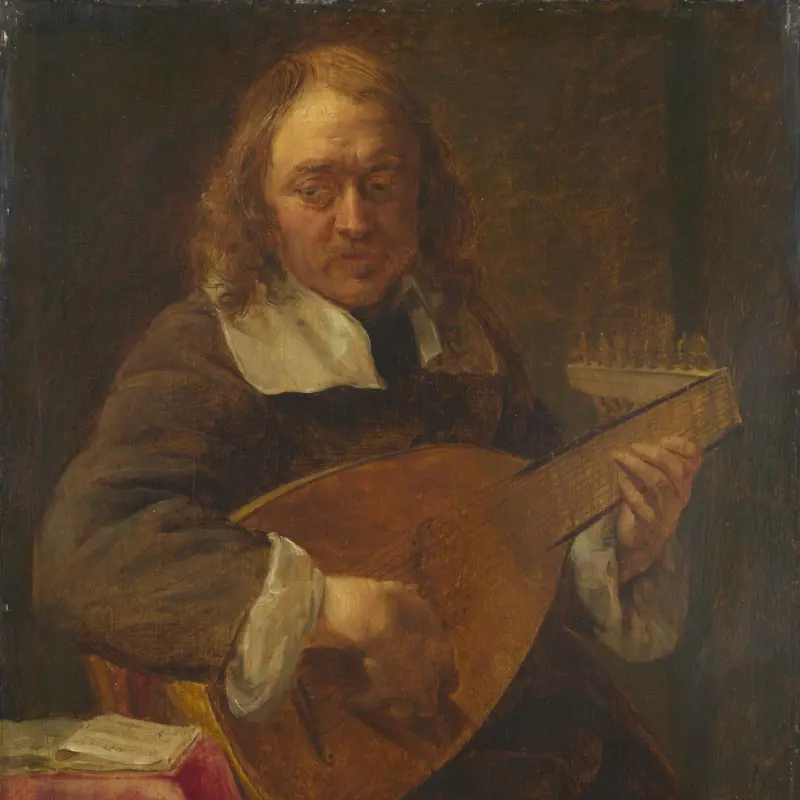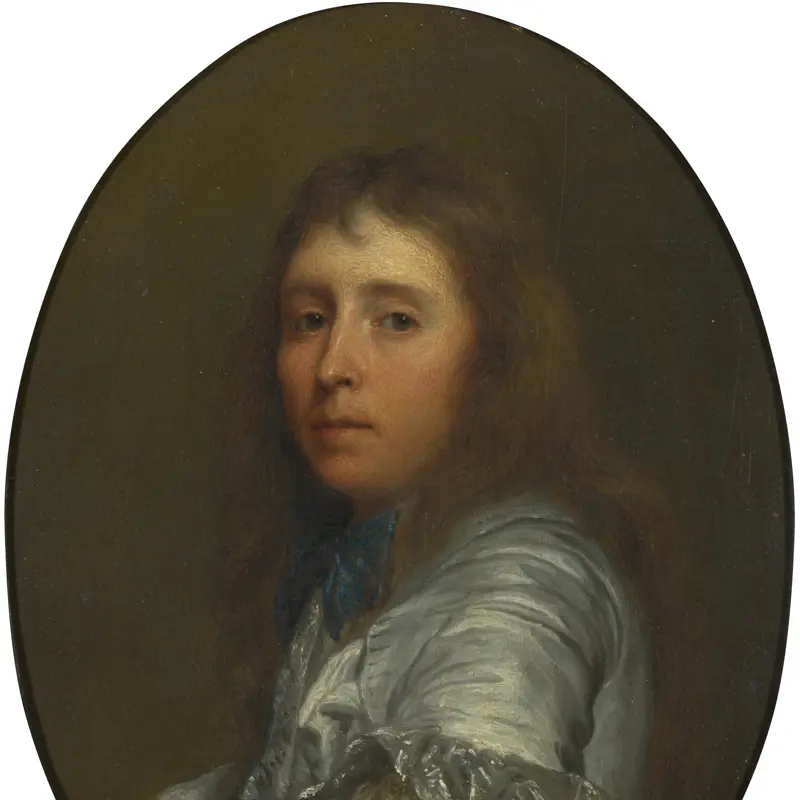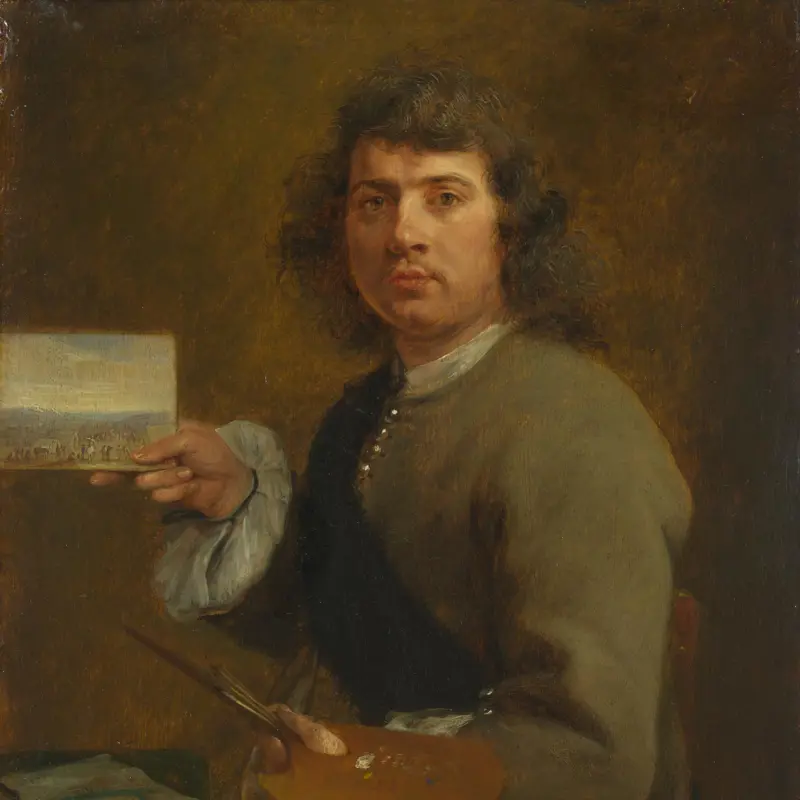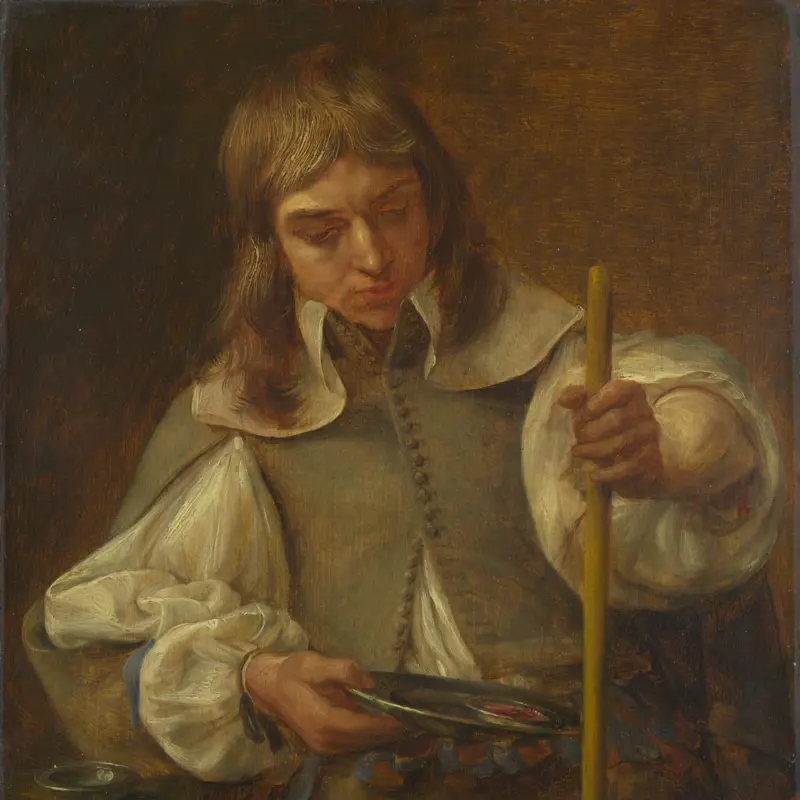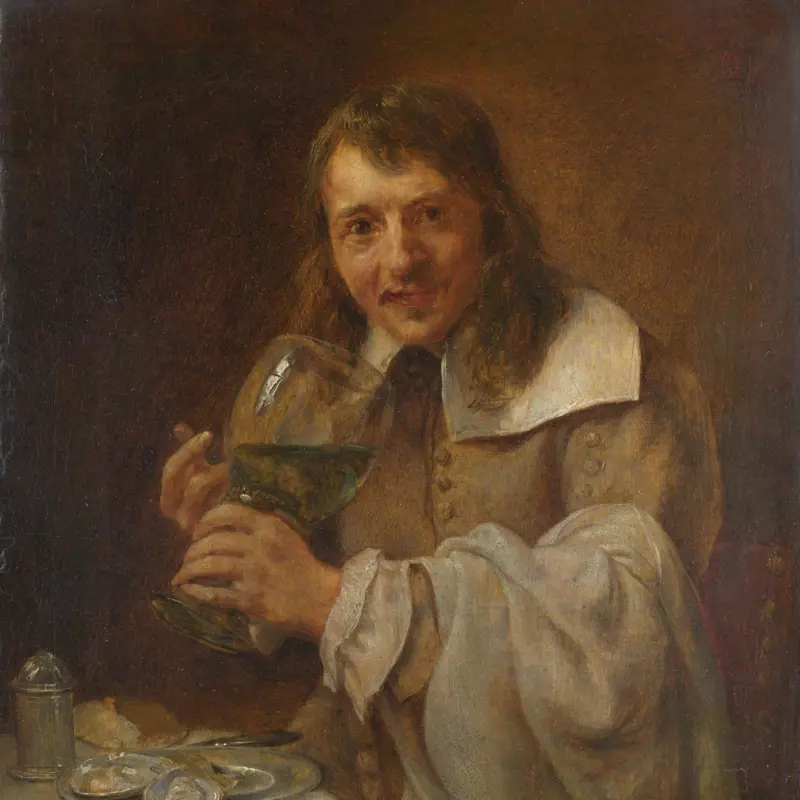Gonzales Coques, 'A Family Group', about 1664
About the work
Overview
We don’t know their names, but this was undoubtedly a wealthy, fashion-conscious family, almost certainly from Antwerp where the artist, Gonzales Coques, was based. Group portraits such as this were popular among the city elite and artists incorporated gestures, looks and activities to bring the scene to life and to suggest the character of the individuals and their relationships to each other.
Here the father, serious and slightly preoccupied, looks down to his left. His son – dressed in skirts, which were commonly worn by boys – is distracted by the antics of a tame bird, but looks the same direction. The wife and daughters, however, look on a contrasting diagonal. This sequence of figures forms a graceful arc, linked and contrasted by looks and gestures.
The eldest daughter stands alone, slightly outside the group. The roses she gathers are symbolic of love and marriage – this and her position may indicate that she is about to marry and leave her immediate family.
Key facts
Details
- Full title
- A Family Group
- Artist
- Gonzales Coques
- Artist dates
- 1614/18 - 1684
- Date made
- About 1664
- Medium and support
- Oil on canvas
- Dimensions
- 64.2 × 85.5 cm
- Acquisition credit
- Bought, 1871
- Inventory number
- NG821
- Location
- Not on display
- Collection
- Main Collection
- Previous owners
Provenance
Additional information
Text extracted from the ‘Provenance’ section of the catalogue entry in Gregory Martin, ‘National Gallery Catalogues: The Flemish School: circa 1600–circa 1900’, London 1986; for further information, see the full catalogue entry.
Bibliography
-
1829
J. Smith, A Catalogue Raisonné of the Works of the Most Eminent Dutch, Flemish, and French Painters: In Which is Included a Short Biographical Notice of the Artists, with a Copious Description of Their Principal Pictures […], 9 vols, London 1829-1842
-
1834C.-J. Nieuwenhuys, A Review of the Lives and Works of Some of the Most Eminent Painters, London 1834
-
1844A.M. Jameson, Companion to the Most Celebrated Private Galleries of Art in London: Containing Accurate Catalogues, Arranged Alphabetically, for Immediate Reference, Each Preceded by an Historical & Critical Introduction […], London 1844
-
1854G.F. Waagen, Treasures of Art in Great Britain: Being and Account of the Chief Collections of Paintings, Drawings, Sculptures, Illuminated Mss. […], vol. 2, trans. E. Eastlake, London 1854
-
1960E. Plietzsch, Holländische und flämische Maler des XVII. Jahrh, Leipzig 1960
-
1970G. Martin, The Flemish School, circa 1600-circa 1900, London 1970
-
1981G. de Vuyst, Gonzales Coques, MA Thesis, Rijksuniversiteit 1981
-
1986Martin, Gregory, National Gallery Catalogues: The Flemish School, circa 1600 - circa 1900, London 1986
-
1987C. Brown, The National Gallery Schools of Painting: Flemish Paintings, London 1987
-
1991F. Herrmann, 'Peel and Solly: Two Nineteenth-Century Art Collectors and Their Sources of Supply', Journal of the History of Collections, III/1, 1991, pp. 89-96
-
1992G.C. Bauman and W. Liedtke, Flemish Paintings in America. A Survey of Early Netherlandish and Flemish Paintings in the Public Collections of North America, Antwerp 1992
-
1992J. Ingamells, The Wallace Collection: Catalogue of Pictures, vol. 4, Dutch and Flemish, London 1992
-
1993M.E. Wieseman, 'The Art of "Conversatie" Genre Portraiture in the Southern Netherlands in the Seventeenth Century', in P.C. Sutton, The Age of Rubens, Boston 1993, pp. 183-93
-
2001
C. Baker and T. Henry, The National Gallery: Complete Illustrated Catalogue, London 2001
About this record
If you know more about this work or have spotted an error, please contact us. Please note that exhibition histories are listed from 2009 onwards. Bibliographies may not be complete; more comprehensive information is available in the National Gallery Library.

